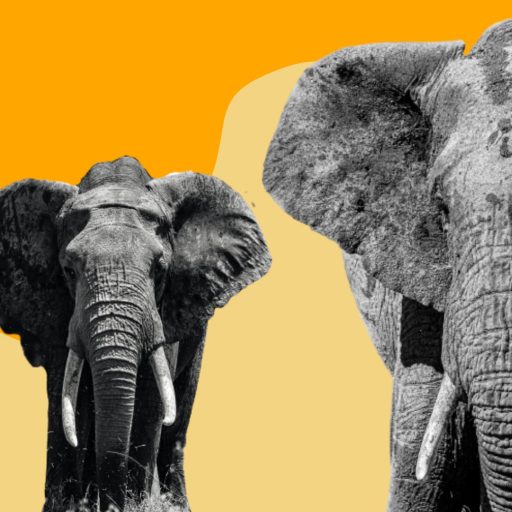Textual Analysis
13 Aralık 2022Hareem Faiz Bangash
The article, written by Lori Sirianni is based around the lives and treatment of elephants. It places emphasis on the scientific evidence we have gained over elephants being sentient beings and having the ability to feel emotions, much like humans. Thus, the article begins by talking about the lawsuit filed by the NhRP (Nonhuman Rights Project) for two Asian elephants Beulah and Minnie and African elephant Karen. This lawsuit aims to establish protection laws for elephants. The article then showcases a case study of Lucy, a magnificent elephant currently held in solitary in Canada. Lucy is 42 years old and was born in the wilderness of Sri Lanka. However, for the 40 years of her life, Lucy has been subjected to solitary confinement and having her rights taken away from. Although there has been a twelve-year long campaign to release Lucy to a sanctuary in the US, she remains isolated in an unsuitable environment at the Edmonton Valley Zoo in Canada. While being held in solitude, away from others of her own kind, she also has to face the harsh weather conditions of Edmonton. The article then continues to talk about how science has provided us with adequate proof regarding the effects of captivity on the emotional and psychological health of elephants. Studies have shown that confinement results in stress and injury to elephants’ psychological, physical, and emotional health. The article argues that since elephants are conscious, sentient beings that are capable of communicating, mourning and self-awareness; they deserve to have rights and their rightful autonomy should be provided to them. The text also supports the claim of provision of freedom to elephants by providing us with an understanding of how elephants are intelligent beings, capable of advanced cognitive functions as well. The text clearly states its argument in the terms that the captivity of these beings who have enhanced cognitive abilities and display empathy merely for the sake of our enjoyment is wrong and cruel. It states autonomy and the ability to exercise free will to be a fundamental right of elephants.
To place the text within the conceptual map of the debate over moral considerability, we would have to understand the fundamental rights of all beings in the animal kingdom. While the article focuses primarily on the conscious abilities of elephants, it is no doubt that several other species of animal share many qualities with elephants. After recognizing that animals are able to understand the existence of autonomy and subsequently a lack of it, we will then have to ask the question of how we can only provide rights to our own species. One of the main arguments we use when we talk about moral considerability towards humans is the existence of a conscience, the ability to feel and perceive our world around us. By the implication that animals, specifically elephants possess these exact qualities and their cognition is similar to that of humans, it blurs the lines of the differences we draw among ourselves and animals. Moreover, there lies a key difference between sentience and intelligence. According to Singer’s argument, moral considerability applies to all sentient beings and intelligence proves to be a secondary consideration for Singer. Whereas for Scruton, intelligence or rationality is a primary component that allows a being to be morally considerable to us. If we use sentience as a criterion for moral considerability such as Singer, we will find that elephants do deserve our moral considerable. This is because elephants have been proven to have a conscious sentient and higher cognition as they are able to mourn the loss of their own, showcase emotions such as joy and sadness via their body and behaviors. This can be seen as an effective method of communication. Communication and the ability to communicate is an important and relevant factor in terms of moral considerability. Not only do elephants communicate with one another, they also use their behavior as a means of communication.
However, on the contrary, it is also widely known that elephants may be among the small number of creatures from the animal kingdom that display high levels of intelligence. If we use Singer’s view of moral considerability, it puts elephants in a broad category of animals that display sentience — reducing the importance of our morality towards them. Although, if we use Scruton’s view of using intelligence as the primary criteria for moral considerability, we will find that us being morally responsible towards elephants becomes an undeniable truth. Thus, the argument within the article drifts more towards Scruton’s view as to why elephants require our moral considerable to such a high level. Due to the presence of this key ability of being more intelligent than other animals within the kingdom, it can be said that elephants require our moral considerability more severely.
If we take into account just these two factors that hold true for elephants — sentient and communication, we will find ourselves in a situation where there is a greater number of animals that display the same capabilities. However, one key difference to note here is the difference between sentience — or self-awareness — and intelligence as mentioned previously. While most animals are sentience, a few of them are capable of displaying intelligence that is closer to what we see in the human species. By recognizing the rights of elephants and understanding how our morality must include elephants, we have to also recognize the rights of other animals from the kingdom that are similar to elephants. We will no longer be able to justify the captivity of animals — elephants or others — for the sake of our own entertainment. Moreover, the capacity for self-awareness which elephants exhibit, understanding that they are held captive and lack autonomy is a common trait among other animals as well. Many — if not most — animals are capable of understanding their captivity and the lack of ability to move around as they wish. If we adopt the argument that as animals possess these traits, we cannot hold them in captivity; we will subsequently diminish our ability to confine animals and would have to let them stay in the wilderness. On the contrary, if we adopt the argument that elephants require moral considerability because they possess both sentience and intelligence, we will have a much narrower category of animals to include in our sphere of moral considerability. According to the article, the presence of intelligence and sentience both within elephants is what makes them worthy of our moral consideration. So thus, by using the argument of the article, we might have a few animals that fall display both these qualities and therefore, we are held morally responsible towards them.
The article provides a strong argument in its case for the rights of elephants. It uses the existence of scientific proof regarding the emotional, cognitive and behavioral capabilities of elephants alongside the presence of intelligence as an integral part of their deserving of moral considerability and provision of rights. The argument is also further supported by evidence that elephants indeed feel emotions and can display them through their behavior, which shows that they are sentient and also possess capabilities of communication that differ from other animals. For this, the article includes a 10-minute video of Lucy in her solitary confinement. In the video, Lucy’s distress and sadness can be clearly seen, even to those who do not have any expertise in animal behavior. The lack of Lucy’s expression of any form of joy, such as flapping her ears or wagging her tail sends a clear message that she is indeed under great stress due to her solitude. This ability to not only perceive confinement, but to feel the complex emotion of sadness and express it via external behavior further strengthens the argument that these beings are sentient and are fully capable of comprehending their surroundings. It also shows that while Lucy is aware of her solitary environment, she understands and comprehends her solitude to a much higher degree than any other animal perhaps would. The cognitive processes displayed by elephants and their ability to experience their life so similarly to humans blurs the lines between just exactly why we limit our moral consideration and provision of rights to our species. The moral relevance of the argument displayed in the article is clearly explained — if animals such as elephants are sentient, conscious, cognitively capable and intelligent beings, then they deserve their rights to be free and live their lives according to their will. Thus, Sirianni’s text forces us to expand our beliefs regarding the abilities of animals and their rights over their own lives.

